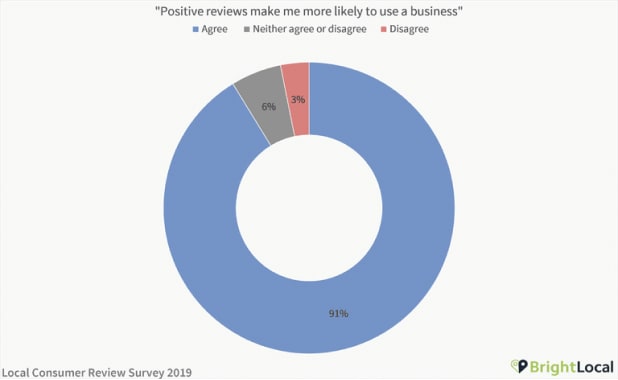Social media is ingrained into almost every facet of our culture and social listening isn’t far behind. When you implement the right social listening tactics, you’re able to cut through the noise made by billions of messages sent every day and pinpoint the interactions to focus on.
But how do you implement a solid strategy that grows your business instead of draining your resources? What should you focus on and what should you ignore?
This guide takes a deep dive into social listening, the factors to consider, and proven tactics that’ll help you generate customers and launch better marketing campaigns.
What is social listening
Social listening is the process of monitoring the social media platforms you’re active on for mentions of your brand, competitors, and the industry as a whole. Over time, you’ll collect data that allows you to act in a timely manner, increase brand awareness, and generate customers.
Monitor social media to get a baseline of data about your brand, your competitors, and relevant keywords.
Take those insights and optimize your positioning in the market or even just respond to happy (or unhappy) customers in a way that improves loyalty. For example, you can transform a negative situation into a positive one which is what happened with EPICbar.
Best customer service ever. After getting one bad bar in a box, they not only sent me a replacement bar, but sent SIX bars, a coupon, AND a handwritten thank you note. Will be an @EPICbar customer for life! 🙌🏻 pic.twitter.com/WgHNlNJQLh
— Megan Walker Holcombe (@meganwholcombe) May 26, 2018
At first glance, social listening appears to be the same thing as social media monitoring. While it encompasses many of the same things as social monitoring such as:
- Brand mentions
- Industry trends
- Keywords/hashtag usage
- Competitor mentions
Social listening goes a step further by taking proactive steps in response to the data you gather. You measure both quantitative and qualitative data. For example, you’ll take note of the absolute number of brand mentions as well as the sentiment associated with those mentions.
It shouldn’t be done blindly. Just like with other marketing initiatives, the data you collect and your responses should be segmented based on a number of important factors.
Factors to consider for social listening
In addition to monitoring brand mentions, industry trends, keywords, etc. the data should be filtered to make sure it’s relevant to your situation.
Industry
The first step is to ensure the social content you’re monitoring is from the right industry. If you only serve people in the banking industry, then those in the pharmaceutical and marketing space wouldn’t be relevant to you.
That holds true even if they’re speaking on a topic that’s closely related to your brand.
Create a shortlist of niches that you’ll target and shoulder niches that can also be a part of the conversation and focus on those.
Geography
Are you an international brand, national, or locally oriented? This will determine the scope of your social listening activities. Even though someone from Australia fits every criterion, it won’t matter if you only serve customers in Europe and North America.
Identify the regions that you serve or can serve in the future and limit your activities to content that originates there.
Competition
I don’t think you should focus too much on your competition but it’s important to understand what they’re doing well and what they’re doing poorly. This will help you identify areas where you can outshine them like in your pricing structure or messaging.
Identify competitors that are active on the same platforms you’ve chosen to focus on. Take note of how they interact with customers, response times, and the general consumer sentiment towards those brands.
Language and culture
How does your target audience speak? What words do they use to describe the products and services you sell? Do they have their own lingo? Are there cultural norms that you might have overlooked but are incredibly important?
These are the kind of questions you’ll be able to answer so look for patterns in your data.
For example, in the SEO world, there’s a new term or tactic coming out every week. You need to keep track of these changes to deliver relevant messages over time.
Social listening strategies
Let’s take a deep dive into the different ways you can use it to improve your brand and interact with prospects in a way that generates new business.
Optimize marketing messages
The most effective marketing campaigns in the world are in line with the demographic and psychographic profiles of your audience. A great example of this is the Dollar Shave Club launch video.
It talks about one of the most generic products in the world – razors – but does it in a way that appeals to its target audience. It’s obviously aimed at a younger socially conscious group.
How did the creators of the brand figure out what their target demographic cared about? Deep market research which included social listening.
Do this for your brand to build a psychographic profile of your audience and unlock the voice of customer data. Taken together, you can use these in your marketing campaigns.
For example, ecommerce brands that sell clothes are common. You can stand out by understanding the issues your target audience cares about and use that to improve your current marketing mix.
Everlane did this with its 100% human pride campaign which was well received by its audience.

Source: https://www.everlane.com/100-percent-human-pride
Here are a few things to learn about your audience:
- Values they care about
- Values they don’t relate
- How do they describe products
- What are their pain points
- Cultural differences (religion purchasing habits etc.)
Find customer pain points
People take to social media to express their frustrations all the time.
When you’re listening, it’s important to take note of customers’ tone. Is it something that needs to be solved yesterday or is it something that is not really urgent?
Understanding the context of the pain point will allow you to show customer empathy and give it the attention it deserves.
You don’t want to create a whole new marketing campaign around a minor concern of your users.
Develop new marketing campaigns
Innocent Drinks is one of the most playful brands I know of. As of the time of writing this article, it was going through a process of rebranding. The original redesign was announced on Twitter:
ATTENTION EVERYONE
— innocent drinks (@innocent) March 11, 2020
We have re-re-re-rebranded our super smoothies. Our thinking process was as follows:
Works of art
Words of art
Word art
More WordArt. More vitamins. pic.twitter.com/gO6s2I9qNN
Its audience decided to chime in and share what they liked and didn’t like. Innocent Drinks was listening and re-rebranded (their words):
ATTENTION EVERYONE
— innocent drinks (@innocent) March 11, 2020
We have re-re-re-rebranded our super smoothies.
They now sport a sleek, modern look, designed to speak 1000 words.
However, there are only two words they need to speak:
MORE. VITAMINS. pic.twitter.com/GGtDRW8MJW
This still wasn’t quite right according to the audience and the company redesigned it again.
You all should have gone to bed by now so hopefully we can quietly sneak this subtle re-re-re-re-re-rebrand out without anyone noticing.
— innocent drinks (@innocent) March 11, 2020
Please dream about vitamins. pic.twitter.com/7ZjKTSKEYG
As you’re probably aware, this was a calculated marketing campaign to get its audience talking about the designs. It’susing social listening to hone in on the designs that get the best feedback.
You can do something similar by getting your audience to vote on certain topics they’re interested in. The key is to take their feedback to heart and do something about it.
For example, if you’re considering launching a webinar with a platform like WebinarJam or Demio, you’ll have all the tools to make it a success. The only thing missing would be a killer topic. What do you do? Ask your audience what they’d like to learn more about but give them specific options so it’s in line with the product you’ll be promoting.
Understand customer sentiment
It’s one thing to measure how many times a brand or specific keywords are being mentioned. It’s another thing to figure out how people feel about the topic.
If you’re only doing social media monitoring and realize your competitor is being mentioned 5x more than you, it may feel discouraging. When you look closer and see the sentiment behind those conversations, it may paint a different picture.
Half of those mentions could be positive, 30% negative, and the remaining 20% are neutral. Your brand, in contrast, has close to 80% positive sentiment and only 10% negative. Though smaller overall, you’re better able to meet your customer’s needs.
The user mentions Netflix. If it was a matter of overall brand mentions, this would be perceived as a positive marker. In reality, it’s neither positive nor negative, it’s neutral.
Before tracking keywords or brand mentions, create a system that categorizes sentiment as positive, negative, or neutral. As the data comes in, place it in the right place and determine the percentages of each one. If there are a larger number of neutral or negative mentions then it may be a sign that something is off.
Find advocates and empower them
Do you know if a popular single, athlete, or personality is a fan of your brand? Are they mentioning you on their social media accounts because they genuinely love what you do? When you listen in on public conversations, you’re able to find out who’s brought you into the conversation.
After finding the influencers that are already talking about you, it’s possible to empower them by asking them to be an ambassador. If that’s not an option then you can also advertise to their audience. These are people who’ve seen you endorsed organically so they may already be disposed towards your brand.
Convert dissatisfied customers
Negative customer feedback can bring a business down faster than anything else. A study by Bright Local found that 84% of people trust online reviews as much as an in-person recommendation. 91% say that a positive review will make them trust a business.

Source: https://www.brightlocal.com/research/local-consumer-review-survey/
It’s safe to assume that a negative review will have the same effect. People who’ve seen bad reviews or who’re on the receiving end of the poor product or service are more willing to try out another vendor.
Reach out to people who’ve had a poor experience and offer to do it better. This will open the doors to a conversation where they may become a paying customer.
When you’re jumping into the conversation, make sure you’re relevant and the sales pitch isn’t too strong. That may serve to turn them off just as much as the poor experience they had.
Conclusion
Social listening has become a necessary part of doing business. It’s more than tracking how many times you’ve been mentioned or specific industry keywords.
You also need to take action on the insights you gain. This guide has laid out multiple strategies that you can use to improve your business.
Focus on the ones that make the most sense for you right now and gradually implement the other strategies over time. Soon, your efforts will be bringing in a steady stream of customers.
Let me know what you think in the comments and don’t forget to share!
